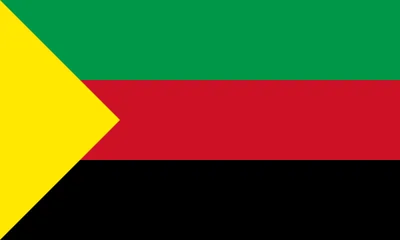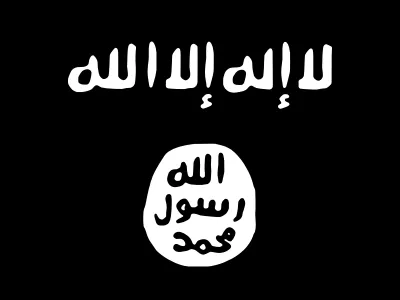North Africa
Bronze Age
The Bronze Age in North Africa was dominated by the emergence of complex societies, most notably Ancient Egypt.
Ancient Egyot emerged from the union of Upper and Lower Egypt, which on their turn probably were the result of the union of several minor kingdoms.
Ancient Egypt
Coastline Changes
Important changes to the coastlines throughout History.
Classical Antiquity in East Africa
Bronze Age
Second Intermediate Period of Egypt
Polities that existed in ancient Egypt between c.1782 and c.1570 BCE.
Ancient Egypt Wars
Iron Age
The Iron Age saw continued cultural development in Egypt.
In this period, Greek and Phoenician Colonies were established on the area. The Phoenicians established trading outposts along the North African coast, most notably Carthage (in modern Tunisia), which would become a dominant maritime power.
Neo-Assyrian King Esarhaddon conquered Egypt in 671 BC.
Iron Age
Phoenician Polities
All the Phoenician polities founded within Phoenicia.
Third Intermediate Period of Egypt
Polities that existed in Ancient Egypt between 1070 and 656 BCE.
Greek Poleis
Independent Greek poleis in the Mediterranean Basin between the 8th and 4th century BC.
Mesopotamian Iron Age
Antiquity
Egypt fell under Persian rule before being conquered by Alexander the Great in 332 BC, leading to the establishment of the Ptolemaic Kingdom, a Hellenistic state that lasted until the Roman conquest in 30 BC.
Carthage rose to prominence as a major power, engaging in trade and rivalries with Rome. The Punic Wars (264-146 BC) culminated in the destruction of Carthage and the incorporation of much of North Africa into the Roman Empire. The Roman provinces of Africa Proconsularis (Tunisia), Numidia (Algeria), and Mauretania (Morocco) became prosperous regions known for grain production.
During late Antiquity Egypt was also involved in the Roman-Persian Wars. During the Crisis of the Third Century most of the eastern territories of Rome became indipendent for a short period as the Kingdom of Palmyra.
Northeastern Africa saw the establishment of early Christian Kingdoms.
With the collapse of the Western Roman Empire the regions of modern-day Morocco, Algeria and Tunisia fragmented into several Roman-Maurian Kingdoms and Roman-Germanic Kingdoms.
classical period of Ancient Greece
Rome
Greco-Persian Wars
Were a series of conflicts between the Achaemenid Empire and Greek city-states.
Antique Greek Leagues
In Archaic and Classical Greece (between the Eighth and Fourth centuries BC), city-states often united into Leagues. Initially relatively democratic political organizations, in later centuries many were ruled by individual Poleis, some more powerful than others, such as Athens, Sparta, Thebes and Corinth.
Ancient history
Achaemenid Period
Rise of Macedon
Wars of the Diadochi
Were a series of conflicts that were fought between the generals of Alexander the Great, known as the Diadochi, over who would rule his empire following his death.
Diadochi
Successor states to the Macedonian Empire (323-276 BC).
Carthagean Expansion
Roman Republic Classic Wars
Hellenistic Period
Roman-Persian Wars
Were a series of Wars between Rome (first the Roman Republic then the Roman Empire and finally the Eastern Roman Empire) and Persia (the Parthian Empire, and then its successor, the Sasanian Empire). The wars were ended by the early Muslim conquests, which led to the fall of the Sasanian Empire and huge territorial losses for the Byzantine Empire.
Roman Republic Internal Wars
Roman Judea Wars
Principate Times of Rome
Early Barbarian Invasions
Crisis of the Third Century
Polities emerged during the crisis of the Roman Empire in the 3rd century (such as the Palmyrene Kingdom and the Gallic Empire)
Civil wars of the Tetrarchy
Factions during the Civil Wars of the Tetrarchy (306-324 AD).
Tetrarchy
Civil war of the Constantinian Dynasty
Polities ruled by the successors of Constantine The Great after his death (337 AD).
Constantinian dynasty
Late Roman Empire
Eastern Roman Empire
western roman empire
Definitive Division of the Roman Empire
After the death of Theodosius I, the last Emperor of the whole Roman Empire, the empire was divided between his two sons in a Western and Eastern part.
Early Eastern Roman Empire
Christian Kingdoms of Nubia
Christian polities founded in Nubia (nowadays Sudan) from the 2nd century until the Arab conquest (7th Century).
Barbarian kingdoms
Polities created by Germanic people (and a few other like the Alans) during the early Middle Ages.
Western Roman Empire
Roman-Maurian Kingdoms
Christian Berber kingdoms in North Africa after the collapse of the Roman state.
Barbarian Invasions
Early Middle Ages
At the Beginning of the Early Middle Ages, Eastern Roman forces were able to reconquer most of the region. However, soon all of Northern Africa fell to the Arab Expansion.
The Western parts of North Africa fragmented again into several Berber Kingdoms of Islamic Faith.
Early Middle Ages
Early Muslim conquests
Were the military campaigns by the first three Islamic Caliphates (the Caliphate of Muhammad, the Rashidun Caliphate and the Umayyad Caliphate) that led to the Islamic conquest of most of the Middle East as well as the Iberian Peninsula.
arab caliphate
Umayyad Invasion of Europe
Were the military campaigns of the Umayyad Caliphate in modern-day Spain, Portugal and France.
Reconquista
Were a series military campaigns from the 8th century until 1492 by the Christian kingdoms of the Iberian Peninsula to reconquer the region from the Islamic rulers that had conquered it during the Umayyad conquest of Hispania.
Abbasid Revolution
Was the overthrow of the Umayyad Caliphate (661-750 CE), the second of the four major Caliphates in Islamic history, by the third, the Abbasid Caliphate (750-1517 CE).
Early Middle Ages
Fatimid invasions of Egypt
Were a series of military invasions of Egypt by the Fatimid Caliphate. The Fatimids were finally able to conquer Egypt in their third invasion, in 969 AD.
High Middle Ages
During the High Middle Ages, powerful Berber dynasties such as the Almoravids and Almohads rose to prominence, uniting much of the Maghreb and even extending their influence into al-Andalus (Islamic Spain). These empires fostered intellectual and architectural achievements, exemplified by cities like Marrakech and Fez.
Trade routes across the Sahara flourished, linking North Africa with sub-Saharan Africa. Goods such as gold, salt, and slaves moved along these routes, enriching the region and facilitating cultural exchange.
High Middle Ages
Fragmentation of the Caliphate of Córdoba
The Caliphate disintegrated in the early 11th century during the Fitna of al-Andalus, a civil war between the descendants of caliph Hisham II and the successors of his hajib (court official), Al-Mansur, leading to the establishment of a multitude of independent Muslim kingdoms (taifas).
Spanish Taifas
Small principalities founded by the Arabs in nowaday Spain and Portugal (711-1492 AD).
Byzantine-Seljuq wars
Were a series of conflicts in the Middle Ages between the Byzantine Empire and the Seljuk Empire.
Crusades
The Crusades were a series of religious wars initiated, supported, and sometimes directed by the Latin Church in the Medieval period. The best known of these military expeditions are those to the Holy Land in the period between 1095 and 1291.
Crusader States
Feudal polities founded by Europeans in the Near East during the First Crusade (1096-1099).
Norman Polities in Southern Italy
All the polities founded by the Normans in Southern Italy between 860 and 1150 AD.
Military campaign of Roger II of Sicily in Africa
The King of Sicily Roger II conquered large amounts of territories in North Africa in a series of military campaigns.
Establishment and expansion of the Almohad Caliphate
Were the conquests of Abd al-Mu'min, founder of the Moroccan Almohad Caliphate.
Late Middle Ages
The decline of the Almohads in the late 13th century led to the emergence of smaller regional states, including the Marinids in Morocco, the Hafsids in Tunisia, and the Zayyanids in Algeria.
This period also saw the establishment of many European Enclaves in North Africa.
Late Middle Ages
Ottoman-Venetian Wars
Were a series of conflicts between the Ottoman Empire and the Republic of Venice
Anatolian Beyliks
Turkish principalities in Anatolia that resulted from the fragmentation of the Seljuk Empire in the second half of the 13th century.
European Enclaves in North Africa before 1830
All the Europeans enclaves in North Africa before 1830.
Late Middle Ages
Ottoman-Mamluk Wars
Were two conflicts between the Ottoman Empire and the Mamluk Sultanate of Egypt that ended with the annexion of the latter by the Ottomans.
Early modern period
In this period the Ottomans established control over much of the region, incorporating Algeria, Tunisia, and Libya into their empire. Morocco, however, remained independent under the Saadian and later the Alaouite dynasties.
Early modern period
Conquests of Mohammed ash-Sheikh
Expansion during the rule of Mohammed ash-Sheikh of the Saadi dynasty.
Ottoman-Persian Wars
Were a series of wars between Ottoman Empire and the Safavid, Afsharid, Zand, and Qajar dynasties of Iran (Persia) through the 16th-20th centuries.
Conquests of Selim II
Expansion during the rule of Selim II in the Ottoman Empire.
Conquests of Murad III
Expansion during the rule of Murad III in the Ottoman Empire.
Portuguese Restoration War
Was a revolution organized by the Portuguese nobility and bourgeoisie sixty years after the crowning of Philip I (Philip II of Spain), the first "dual monarch", that ended the Iberian Union.
Tuareg Polities
Polities created by Tuareg people in the Middle Ages and the Modern Era.
Early modern period
Conquests of Nader Shah
Expansion during the rule of Nader Shah of the Afsharid Dynasty.
French Revolutionary and Napoleonic Period (1789-1815)
The French Revolutionary and Napoleonic period had limited direct impact on North Africa, but it laid the groundwork for future European expansion.
Napoleon’s campaign in Egypt (1798-1801) briefly brought French control to the region, showcasing European ambitions in North Africa. The expedition also initiated a renewed Western interest in Egypt's ancient history and archaeology.
French Revolutionary and Napoleonic Wars
Were a series of conflicts between France and several European monarchies between 1792 and 1815. They encompass first the French Revolutionary Wars against the newly declared French Republic and from 1803 onwards the Napoleonic Wars against First Consul and later Emperor Napoleon Bonaparte. They include the Coalition Wars as a subset: seven wars waged by various military alliances of great European powers, known as Coalitions, against Revolutionary France - later the First French Empire - and its allies.
French Revolutionary and Napoleonic Wars
Military Campaigns of Muhammad Ali
Wars that saw the partecipation of Muhammad Ali Pasha, the Wali of Egypt.
19th Century
The 19th century was a turning point for North Africa, marked by European colonization. France invaded and colonized Algeria in 1830, initiating a campaign of conquest and settlement. By the late 19th century, Tunisia had become a French protectorate, and Western Sahara fell under Spanish influence.
Egypt underwent modernization under leaders like Muhammad Ali. Egypt’s construction of the Suez Canal (completed in 1869) transformed it into a strategic global trade hub, but it also led to British intervention and eventual control.
XIX Century
French conquest of Algeria
Was the French conquest of Algeria. It begun with the French sizing Algiers and other coastal territories of Algeria in 1830. Due to the Algerian resistance, France had slowly to conquer the interior of Algeria over the next 100 years.
XIX Century
From 1900 to the End of World War II
The 20th century began with increased European domination. Libya was colonized by Italy in 1911, and Morocco became a French and Spanish protectorate in 1912. The Berber and Arab populations resisted colonial rule, leading to uprisings such as the Rif War (1920-1927) in Morocco and the Libyan resistance led by Omar Mukhtar.
During World War II, North Africa became a key theater of conflict. The Allied and Axis powers fought significant battles, such as El Alamein and the Tunisian Campaign. After the war, calls for independence grew stronger across the region.
1900-1945
World War I
Was a global conflict between two coalitions, the Allies (primarily France, the United Kingdom, Russia, Italy, Japan, and the United States) and the Central Powers (led by Germany, Austria-Hungary, and the Ottoman Empire). It was mainly caused by the competition of the western countries over domain in Europe and in the rest of the world with their colonial empires. The war ended with the defeat of the Central Powers. The war also caused the Russian Revolution and the ensuing Russian Civil War.
1900-1945
French conquest of Morocco
By the Treaty of Fez of 1912, France imposed a protectorate over Morocco and spent the next two decades conquering the country.
Italo-Turkish War
Was a war beteen the Kingdom of Italy and the Ottoman Empire caused by Italian colonial ambitions. It resulted in the Italian occupation of the Dodecanese and of the Libyan coast (the interior was nominally ceded to Italy but not under its control).
Pacification of Libya
Was an Italian military campaign to conquer the interior of Libya after the creation of Italian Libya, which initially controlled only the coastal part of the region.
World War II
Was a global conflict that lasted from 1939 to 1945 (it started sooner in certain regions) between the Axis Powers (mainly Germany, Japan and Italy) and the Allies (mainly the Soviet Union, the U.S.A., the U.K., China and France). It was the war with more fatalities in history. The war in Asia began when Japan invaded China on July 7, 1937. The war in Europe began when Germany invaded Poland on September 1, 1939. The war ended with the complete defeat of the Axis powers, which were occupied by the Allies.
Spanish Civil War
Was a civil war in Spain fought between the Republicans (that wanted to keep the current Republican system) and the Nationalists (that wanted to end the Republican system and replace it with a Monarchy or a Fascist regime). The war resulted in the victory of the Conservatives led by General Francisco Franco, who established a totalitarian regime in Spain.
Vichy France Colonies
World War II
Cold War Period
The Cold War era was marked by decolonization and the struggle for independence. Libya became independent in 1951, followed by Tunisia and Morocco in 1956, and Algeria in 1962 after a long war of independence from France.
Post-independence North Africa faced challenges, including political instability, economic modernization, and regional conflicts. The rise of pan-Arabism, led by figures like Egypt’s Gamal Abdel Nasser, shaped the political landscape, as did Cold War alignments with either the Soviet Union or the West.
Cold War
Arab-Israeli conflict
is an ongoing conflict between Israel and its Arab neighbours, as well as with Palestine, an area factually controlled by Israel itself. The conflict begun when the British Mandate in Palestine (a former Ottoman territory) was partitioned into an Arab and a Jewish state.
Algerian War
Was a conflict fought between France and the Algerian National Liberation Front from 1954 to 1962, which led to Algeria winning its independence from France.
Postcolonial Africa
Chadian-Libyan conflict
A series of conflictes between Libya and Chad caused by border disputes over the Aouzou stripe.
Western Sahara War
Was a conflict of Marocco and Mauritania (until 1979) against the Sahrawi Indigenous Polisario Front that followed the Spanish withdrawal from Spanish Sahara. The Sahrawi indigenous Polisario Front established the Sahrawi Republic and engaged in a guerrilla warfare with Moroccan forces. Morocco did also build several walls in the region to consolidate its control. The conflict ended with a ceasefire in 1991 with most of former Spanish Sahara under Moroccan control.
Post-Cold War Period (1990-2010)
In the post-Cold War period, North Africa grappled with economic challenges and demands for political reform. Egypt and Libya under authoritarian regimes maintained regional influence, while Morocco pursued gradual political liberalization.
The region became increasingly integrated into global trade, but rising social discontent foreshadowed the upheavals of the Arab Spring.
Post–Cold War era
Arab Spring
Initially a series of anti-government protests and revolts across the Arab world, it soon evolved into a series of wars. The wars caused by the revolts are sometimes referred to as the Arab Winter.
2010s and 2020s
The Arab Spring of 2011 had a profound impact on North Africa. Tunisia became the birthplace of the movement, leading to a democratic transition. Egypt experienced mass protests and political upheaval, resulting in the fall of Hosni Mubarak and subsequent instability. Libya descended into civil war following the ousting of Muammar Gaddafi.




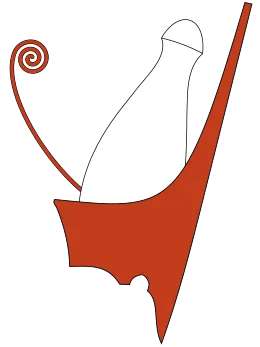

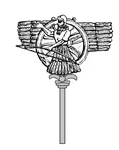
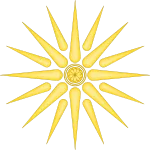
.svg.png.webp)
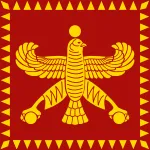



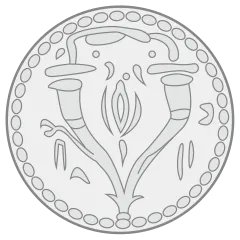
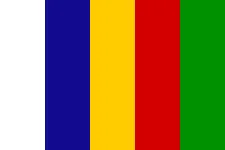
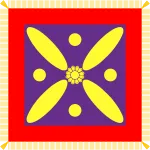
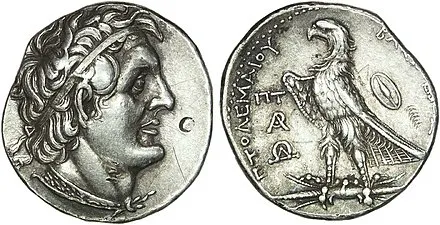
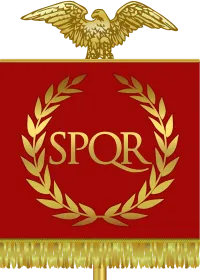
.png.webp)
_in_the__Book_of_all_kingdoms__(C._1350).svg.png.webp)
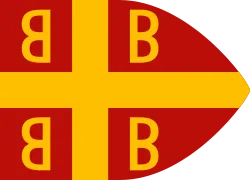
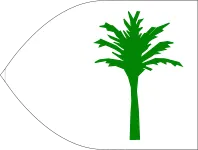

_-_Rustamid_Dynasty.svg (1).png.webp)
_(1258_1659).svg.png.webp)

.svg.png.webp)


.png.webp)



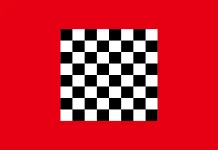
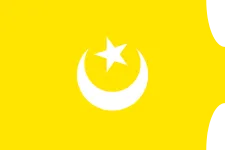

.svg.png.webp)
.jpg.webp)

.png.webp)
.svg.png.webp)



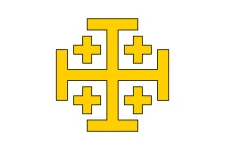
_as_reported_by_the_Book_of_All_Kingdoms.svg.png.webp)
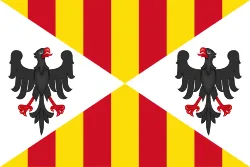
.svg.png.webp)



.svg.png.webp)
.svg.png.webp)
.svg.png.webp)
.svg.png.webp)
.svg.png.webp)
.svg (1).png.webp)
.svg.png.webp)
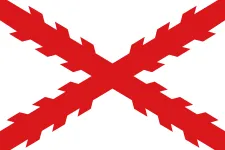
.svg.png.webp)
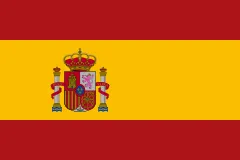
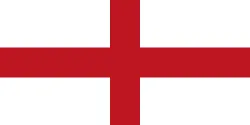
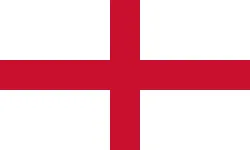
.png.webp)
.svg.png.webp)
.svg.png.webp)
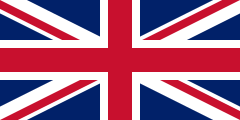


.svg.png.webp)

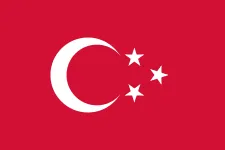

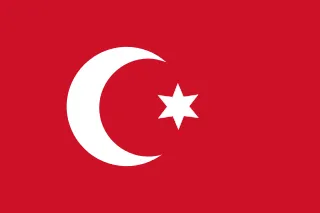
.svg.png.webp)


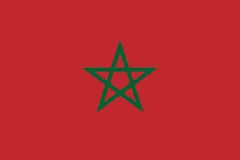

_crowned.svg (3).png.webp)
.svg.png.webp)


.svg.png.webp)
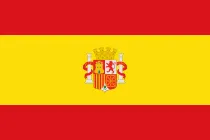
.svg.png.webp)


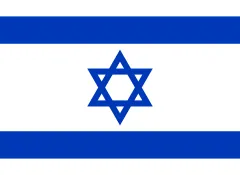
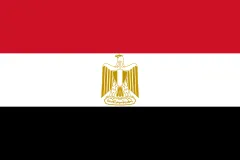
.svg.png.webp)

.svg.png.webp)
.svg.png.webp)
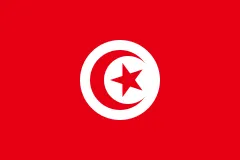
.svg.png.webp)
.svg.png.webp)
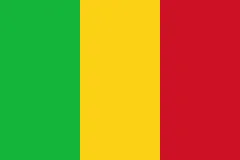
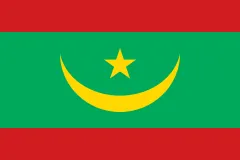
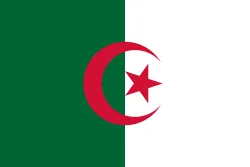
.svg.png.webp)
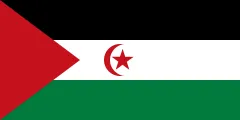
.svg.png.webp)
.png.webp)

